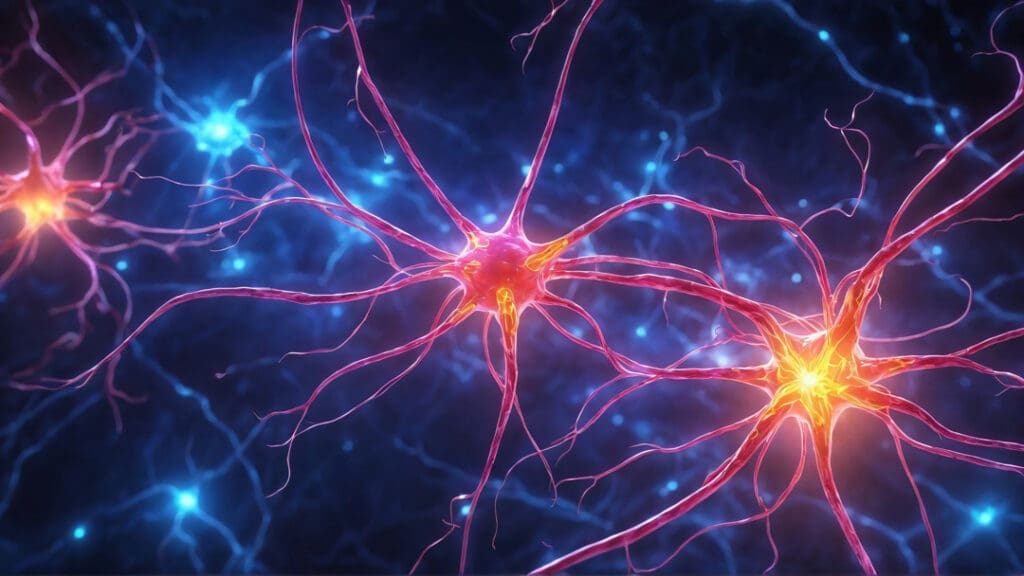Neurofilament light chains: A biomarker for neuroaxonal damage
As biomarkers, neurofilament light chains (Nf-L) offer valuable insights into neuronal diseases such as multiple sclerosis, amyotrophic lateral sclerosis and Alzheimer’s disease. They enable the monitoring of disease activity and therapy monitoring. Thanks to minimally invasive sampling, the detection of Nf-L in serum can be repeated regularly and play a decisive role in clinical practice.

Neurofilament light chains: Background and significance
Nf-L are structural proteins that occur in axons and are released into the blood and cerebrospinal fluid in the event of neuronal damage. Therefore, these proteins can serve as biomarkers for neuroaxonal damage and are elevated in a variety of neurological diseases such as multiple sclerosis (MS), amyotrophic lateral sclerosis (ALS), Alzheimer’s disease and traumatic brain injury. Nf-L values provide a precise assessment of disease progression and can be used to evaluate the response to therapy.
Nf-L in the diagnosis of multiple sclerosis (MS)
MS is the most common autoimmune-mediated disease of the central nervous system (CNS), in which the progression of the disease is accompanied by neuroaxonal damage. The diagnosis of MS is based on the interaction of various parameters, as no single parameter can sufficiently confirm the diagnosis against other diseases. The Nf-L concentrations in serum correlate strongly with the disease activity of MS. Studies have shown that higher Nf-L levels are associated with an increased probability of disease relapses and new lesions on MRI. By regularly checking Nf-L levels, disease progression can be monitored and even subclinical disease activity that is below the MRI detection limit can be detected.
Therapy monitoring and prognosis
The determination of Nf-L concentrations in serum can also be used for therapy monitoring. Effective therapy leads to a decrease in Nf-L levels, while elevated levels indicate inadequate disease control. This enables an individualized adjustment of the therapy to slow down the progression of the disease and achieve a better prognosis.
Age-related and methodological factors
Various factors must be taken into account when interpreting the Nf-L values. For example, the Nf-L concentration increases physiologically with age, which makes an age-appropriate assessment necessary. Body mass index, gender and comorbidities such as diabetes can also influence the results. Due to this inter-individual variability, it is currently important that the monitoring of Nf-L concentrations is always carried out using the same method.
Significance for other neurodegenerative diseases
In addition to MS, the concentration of Nf-L is also increased in other neurodegenerative diseases such as ALS and Alzheimer’s disease. However, particularly in ALS, a disease that affects both the upper and lower motor neurons, the phosphorylated neurofilament heavy chains (pNf-H) in the CSF and serum are also significantly increased and therefore represent a helpful biomarker in the early stages of the disease.
Conclusion
The determination of neurofilament light chains in serum represents a promising approach for monitoring neuroaxonal damage. It offers clinical added value in therapy monitoring and the monitoring of diseases such as MS, ALS and Alzheimer’s disease. The possibility of regular measurement through minimally invasive sampling makes Nf-L in serum a valuable tool in neurological diagnostics.
For further information on Nf-L, please do not hesitate to contact us. Please contact us: innovativebiomarker@limbachgruppe.com
Literature:
- Korsukewitz C, Wiendl H: Biomarkers for estimating the prognosis and diagnosis of multiple sclerosis. 2023; 1: 36-43.
- EUROIMMUN Medizinische Labordiagnostika AG: Neurofilaments in diagnostics – biomarkers for neuroaxonal damage. Available at: https://www.euroimmun.de/documents/Indications/Antigen-detection/Amyotrophic-Lateral-Sclerosis/EQ_6561_I_DE_A.pdf (accessed May 27, 2024).
- Laboratory Corporation of AmericaôÛ Holdings: Neurofilament light chain (NfL). Available at: https://files.labcorp.com/labcorp-d8/2023-04/NfL%20Whitepaper.pdf (accessed June 10, 2024).
- Hemmer B et al: Diagnosis and therapy of multiple sclerosis, neuromyelitis optica spectrum diseases and MOG-IgG-associated diseases. S2k guideline, 2023, in: German Society of Neurology (ed.), Guidelines for Diagnosis and Therapy in Neurology. Available at: https://dgn.org/leitlinie/diagnose-und-therapie-der-multiplen-sklerose-neuromyelitis-optica-spektrum-erkrankungen-und-mog-igg-assoziierten-erkrankungen (accessed May 28, 2024).
- Weber M: Immunopathogenetic understanding of multiple sclerosis. 2021; 4 (Issue 1).
- Abdelhak A, Benkert P, Schaedelin S et al.: Neurofilament Light Chain Elevation and Disability Progression in Multiple Sclerosis. JAMA Neurol, 2023; 80 (12): 1317-1325.
- Kuhle J, Mû¥ller T: “High NfL is never healthy, regardless of the trigger”. 2022; 5: 6-7.
- Yalachkov Y, SchûÊfer JH, Jakob J et al: Effect of Estimated Blood Volume and Body Mass Index on GFAP and NfL Levels in the Serum and CSF of Patients with Multiple Sclerosis. Neurol Neuroimmunol Neuroinflammation. 2023; 10 (1): e200045.
- Benkert P, Meier S, Schaedelin S et al: Serum neurofilament light chain for individual prognostication of disease activity in people with multi-ple sclerosis: a retrospective modeling and validation study. Lancet Neurol. 2022; 21 (3): 246-57.
- Gagliardi D, Meneri M, Saccomanno D et al: Diagnostic and Prognostic Role of Blood and Cerebrospinal Fluid and Blood Neurofilaments in Amy-otrophic Lateral Sclerosis: A Review of the Literature. Int J Mol Sci. 2019; 20 (17): 4152.
The respective companies are responsible for the content of the “Corporate News” section


